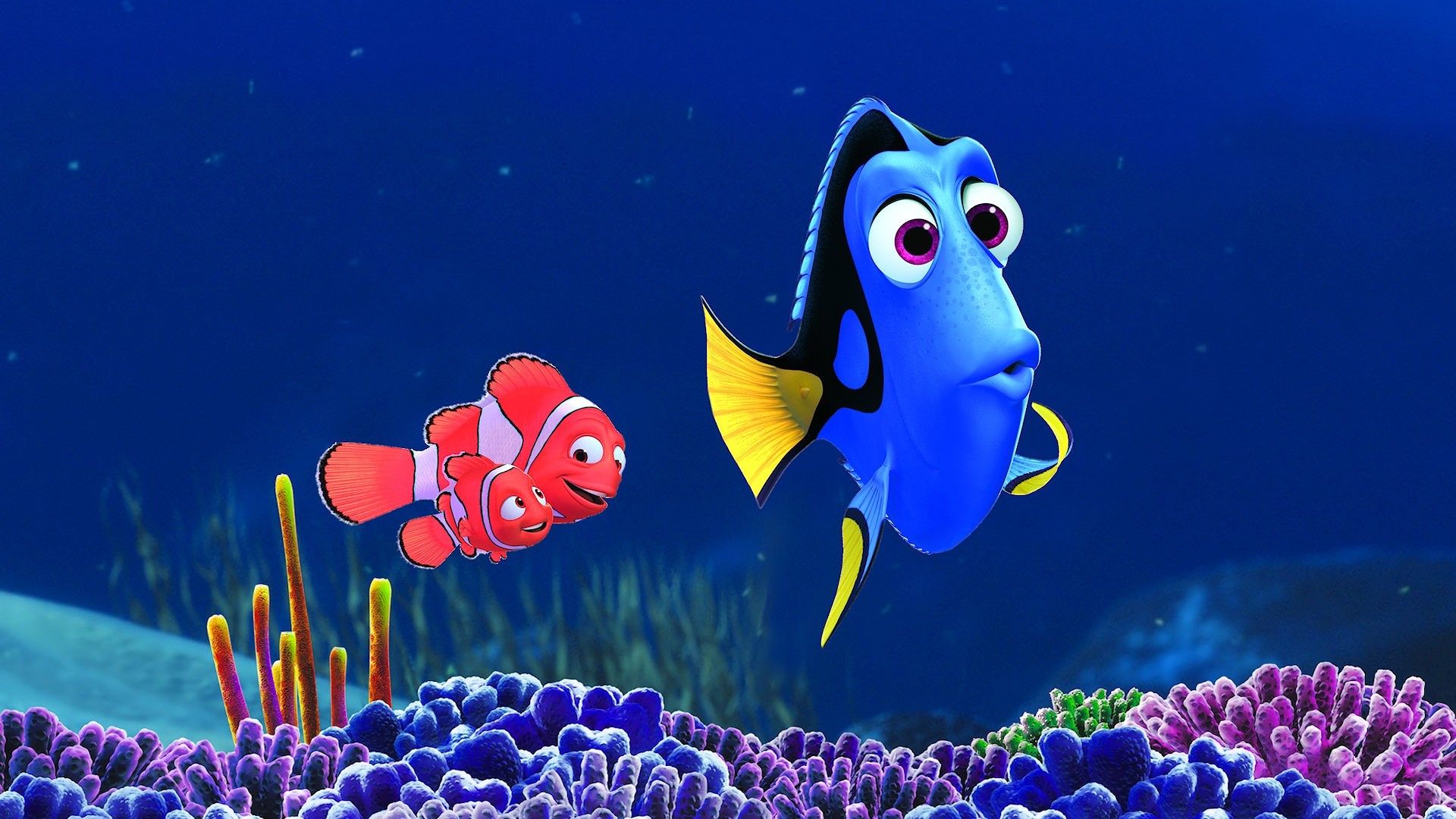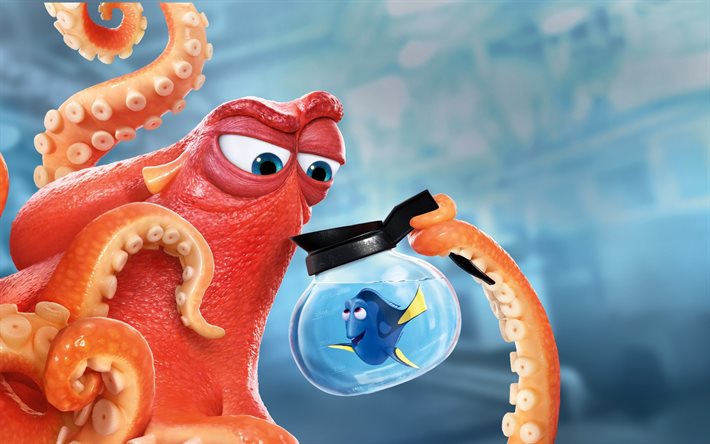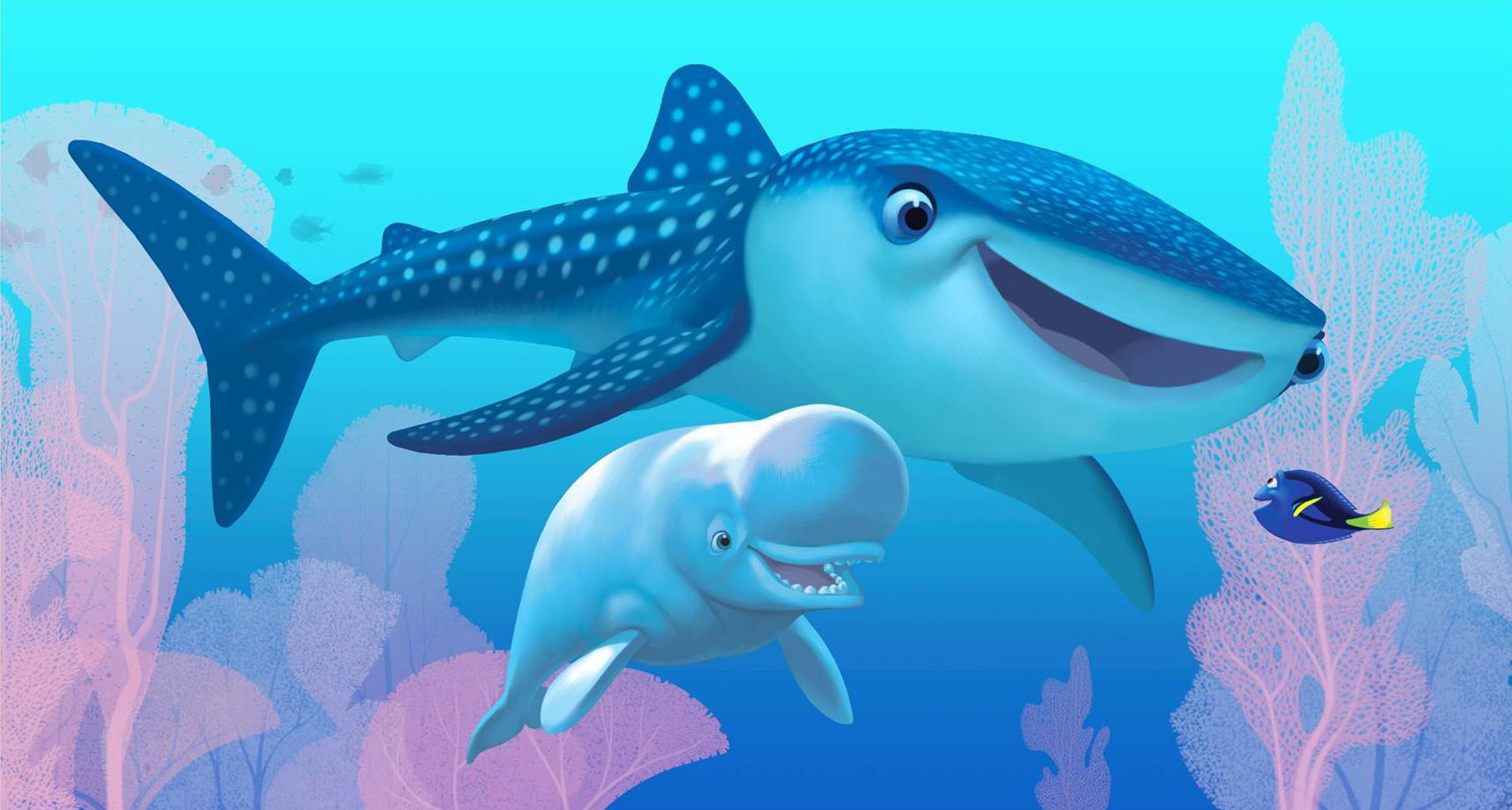
From L to R, Nemo (Hayden Rolence) chats with his dad Marlin (Albert Brooks) about helping Dory (Ellen DeGeneres) find her family in FINDING DORY.
Chronologically, it has been 13 years since its Finding Nemo, but Finding Dory picks up only about a year after the events of its predecessor. Marlin (Albert Brooks), Nemo (Hayden Rolence), and Dory (Ellen DeGeneres) are living happily together, with routines on the schedule most days. Dory, however, begins having mild flashbacks, breaking through her short-term memory loss, which triggers in her a strong urge to find her long lost family. Somewhat reluctantly, if not skeptically, Marlin and Nemo agree to assist Dory on her adventure.
Finding Dory then once again takes the trio on a trek through ocean where they encounter friends, potential foes, and discover a few life lessons along the way. The group receives help from old compatriots like Crush the gnarly turtle, and new ones including a pair of chummy sea otters (Idris Elba and Dominic West) as well as a cantankerous seven-legged octopus named Hank (Ed O’Neill) who makes a bargain with Dory once she enters the facility where she may have once lived. 
What works in Finding Dory are the visuals. If Finding Nemo broke new ground with its stunning art depicting the great blue wondrous expanse, Finding Dory polishes that ground with unmatched shine. The animators use colors in combination with light in ways your eyes may not have even realized was possible, making every scene a delight to behold like being treated to an underworld living painting. Pixar doesn’t create animated worlds anymore—it recreates potentially real ones crafted from imagination, and simply populates them with animated characters.
While Finding Dory is wonderful to watch from a visual perspective, it is somewhat lacking in originality both from a story and character perspective. Finding Dory is simply Finding Nemo 2.0, except with less of the charm and cohesion. Even with the obvious necessary levels of disbelief that should be expected for an animated family film, Finding Dory becomes so telegraphed, coincidental, and preposterous that the absurdity ruins the ride. When Hank the octopus begins driving a delivery truck on a highway, some audience members will just start shaking their heads wishing for the credits to come quickly.

The other mistake the production team makes is failing to include an enjoyable prominent character. In Finding Nemo, Marlin was a worry-wort who panicked and freaked out in nearly every scene. His grating personality was balanced by Dory’s unflappable optimism and enthusiasm, and then further bolstered by supporting creatures such as the Nigel the pelican (Geoffrey Rush). In Finding Dory, the title character has persistence, but her happiness is fully swapped with tragic sadness, and her support team annoy more than delight. While audiences while undoubtedly root for Dory, her journey is mostly joyless.
In the end, Finding Dory is almost a must-see for culturally significant reasons (as the sequel to a nearly universally acclaimed Academy Award winner), as well as the incredible animation, but the final product unfortunately sinks due a nearly exact rehashing of the first film and a dearth of likeability among the fishy flock.
Grade: C+
Photos courtesy of Disney